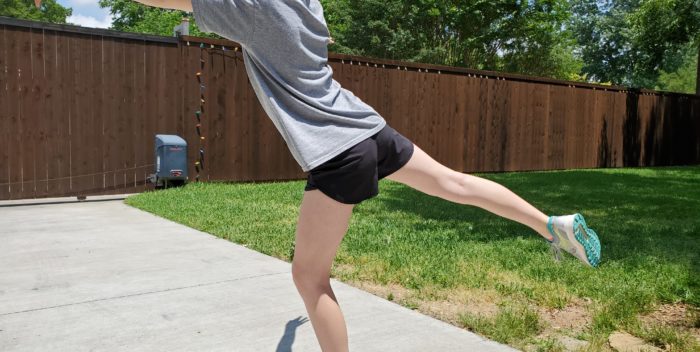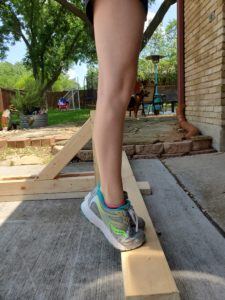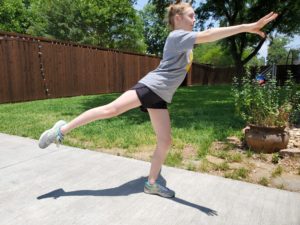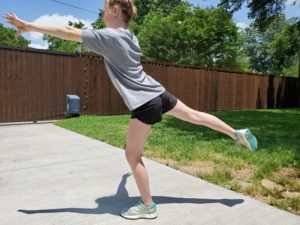The Most Important Muscle You Don’t Know About!
by Ethan Burgess
You’ve heard of the calf muscle, but chances are it’s probably not high on your list of important body parts to train. Many strength and conditioning programs are great at developing large muscles, but should you be doing more to improve your calf development?
Many people don’t realize that the calf is made up of a couple different muscles, and they are some of the most underdeveloped and important muscles for figure skaters. Sure you need to develop your quads, hamstrings and glutes, but your calf muscles play a more significant role in total body performance than you might realize.
Here is what you need to know in order to develop a better understanding of how your calf muscles work and how to train them more effectively. Get ready to jump out of your seat, literally!
Anatomy & Physiology of the Calf
The calf muscles lie on the back or posterior of the lower leg and are actually made up of two different muscles: the gastrocnemius and the soleus.
The gastrocnemius lays on the superficial side, or on top of the two muscles, closer to the skin’s surface. This muscle has two parts or “heads” which create the visible bulge or diamond shape almost giving the appearance of two different muscles.
The soleus lies on the deeper side or underneath of the gastrocnemius muscle, farther from the skin’s surface. The soleus is the larger and stronger of the two muscles that make up your calf.
The gastrocnemius and soleus muscles get smaller as they merge at the base of the lower leg above the ankle. Tough, connective tissue at the bottom of the two muscles connect to the Achilles tendon, which connects to the heel bone, also known as the calcaneus.
Now that you understand where your calf muscles are, let’s discuss their function and what they actually do. The gastrocnemius and soleus are play an important role in more movements than you might think. Both muscles allow the foot to flex, the action of moving your foot up and down, also called plantar flexion. A good way to understand the action of these muscles is to picture your foot on a gas pedal, pressing and releasing. Your gastrocnemius and soleus work together to pull the heel up during forward movements such as walking, running or jumping. As you raise your bodyweight up to your toes, the Achilles tendon pulls the heel bone up and releases it back to its resting position when your feet are flat. The soleus, in particular, plays a pivotal role in maintaining posture by preventing the body from falling forward as well. Without these muscles, you wouldn’t be able to jump into the air for a single, double or triple salchow or point your toe during a landing position or spiral sequence.
An interesting fact about the soleus is that it plays a critical role in blood circulation. This process, known as the “skeletal-muscle pump,” involves a collection of muscles throughout the body that help return blood back to the heart. Larger veins within the soleus muscle compress and decompress as the muscle contracts, aiding in the return of venous blood back to the heart.
Who would have thought that keeping these lower leg muscles strong and engaged could improve and maintain a healthy heart? Now you can appreciate how important these often overlooked muscles are!
How to Train Your Calves More Effectively
What is the best way to train these muscles off ice to maximize your on-ice performance? Here’s an important tip: Bodyweight calf exercises alone probably won’t get the job done. Why? What do you do all day, every day? You move your bodyweight up and down against gravity. Your body and calf muscles have gotten accustomed to walking, running and jumping with this resistance. Therefore, you need to implement other strategies so your calf muscles say: “Wait a minute, this is harder than what I’m accustomed to! I need to get stronger!”
A good exercise adaptation to strengthen your calf muscles more effectively is to add volume (extra weight) and resistance to your training when you perform calf exercises. This means doing a lot more reps. If you normally do three sets of 10 to 12 repetitions, try doing four or even five sets.
You can do calf raises either standing flat on the floor or on a stair with your heels slightly lower than your toes. You can use almost anything when adding more resistance, so don’t be afraid to get creative! A great option is to hold a dumbbell, or any type of weight or resistance. Always use caution when adding more weight to any exercise; start with 5 pounds to see how your body responds and adjust from there.
Another way to train differently is to incorporate isolation exercises and train at different speeds. You can isolate the left and right calf independently rather than working them both together. Try working each muscle separately for a deeper mind-muscle connection and better contraction or “squeeze” of the muscle.
You can also break down calf raises into a beginning, middle and end, or thirds. Instead of going from flat all the way up to your toes, try doing “mini” calf raises and focus on the different parts of the whole movement. Introducing a variety of speeds, fast or slow, is also effective. Try counting to five, either raising up to your toes or returning back to the starting point. You can also perform a “power” calf raise where you focus on that final push off of your toes as you jump into the air. This is a great way to work on that specific explosive power you need for any jump in figure skating.
Adding these variations to your strength and conditioning program will confuse your muscles and force them to work harder and differently, which is a good thing. These changes will ultimately develop stronger, more adaptable muscles. It’s also more fun to experiment with exercises and not do the same boring thing every time!
Putting It All Together!
So, how should you put all of this new information to use? I often tell my skaters and clients that there is not a one-size-fits-all approach when it comes to exercise. You will need to see what works best for you, simply by trying.
A good place to start is adding one new idea or exercise into your off-ice training plan and see how you feel. This will give you great insight into what works best for you and how best to implement these changes to your off-ice strength and conditioning program. During one workout, try adding a speed training drill and in another, try adding more reps and sets.
As you navigate through your workouts and understand what your specific needs are throughout the season, you will naturally notice which exercises or ideas work best for you. Don’t feel overwhelmed or that you need to add everything at once. Remember, off-ice strength & conditioning is a marathon, not a sprint. Over time you will learn what the ideal combination of exercises is to maximize your strength to improve on-ice performance.
TIP
Don’t forget to stretch! If you are having trouble bending, it may be from stiffness in your calves, Achilles and/or ankles, which are all connected. Remember that you should always stretch after your training session. The reason for this is because stretching “relaxes” your muscles and they become a little slower when you try to use them. The last thing you want is slower, less responsive muscles when trying to perform explosive movements required for figure skating.
Ethan Burgess is founder and chief trainer of Olio Fitness. A former professional pairs skater and two-time national champion and six-time medalist, he has over 30 years’ combined experience in figure skating and helping athletes of all levels, from beginner to Olympic medalists, incorporate proper strength and conditioning programs into their training. He was the lead skating double in the Hollywood movie “Blades of Glory” and a finalist on the ABC television show “Skating with the Stars.”
You can reach Burgess at adapt@olio.fit and/or visit his website at olio.fit.

 MY COACH ROCKS
MY COACH ROCKS TEAMS IN SYNC
TEAMS IN SYNC EXPRESS YOURSELF
EXPRESS YOURSELF FOCUS ON ARCHIVES
FOCUS ON ARCHIVES COMPETITORS’ CORNER
COMPETITORS’ CORNER NEWS & NOTES
NEWS & NOTES









